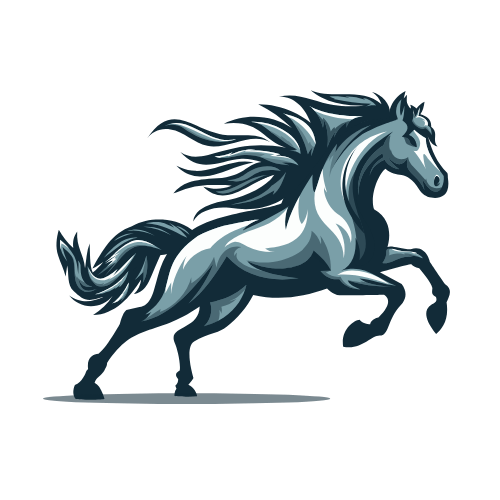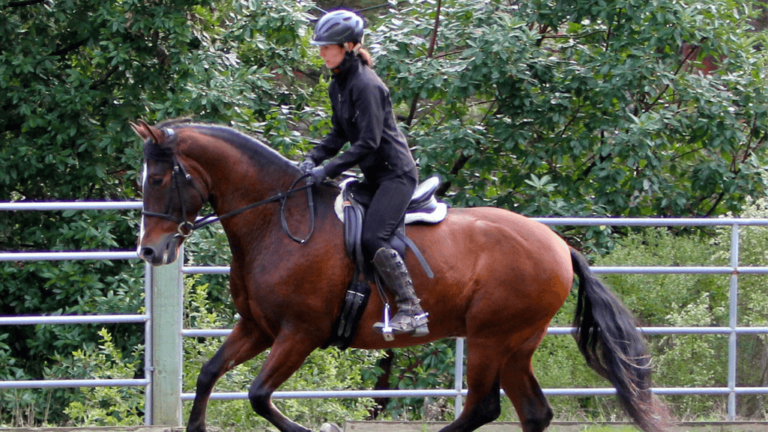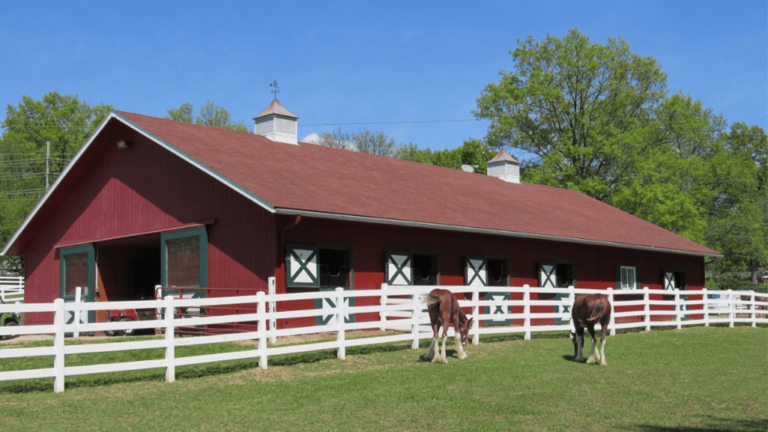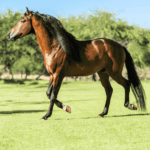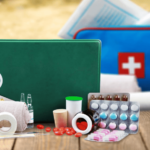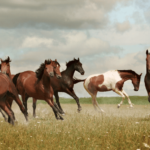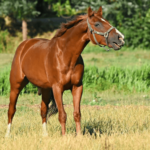Horseback riding is a favorite activity for many, but it comes with risks. The excitement of riding a horse is thrilling, yet it’s vital to remember that horses are powerful and unpredictable. Even experienced riders can face accidents.
In the U.S., there are about 30 million horseback riders. Serious injuries are more common for riders than for motorcyclists or car racers. Common injuries include fractures, bruises, and sprains. The biggest risk is falling off and getting hurt in the neck, spine, or head.
Horses can get scared easily by sudden sounds or movements. This can lead to accidents. In fact, 20% of injuries happen when riders are thrown off, often getting kicked or stepped on.
While riding is safer than sports like football, injuries are often more severe. Horseback riding injuries often need hospital care. It’s also a leading cause of brain injuries in adults in the U.S. Falls and kicks from horses are the main causes of injuries.
To stay safe, wearing helmets and proper gear is key. Yet, only about 20% of riders wear helmets. Some states, like Florida and New York, require helmets for kids. Laws vary, but most states limit liability for horse-related activities.
By knowing the risks and taking safety steps, riders can enjoy horseback riding safely. This way, they can enjoy the many benefits of horseback riding while reducing the chance of accidents and injuries.
Key Takeaways
- Horseback riding has a higher rate of serious injuries per riding hours compared to motorcyclists and automobile racers.
- Common injuries include fractures, bruises, abrasions, sprains, strains, and concussions, with the greatest danger being thrown from a horse.
- Horses can be easily spooked by sudden movements, loud noises, and other triggers, leading to accidents.
- Safety measures like wearing helmets, proper attire, supervision, and training are essential for minimizing risks.
- Only about 20% of U.S. riders regularly wear helmets when mounted on horses, and helmet laws vary by state and local jurisdictions.
Understanding the Risks of Horseback Riding
Horseback riding is loved by many, but it comes with risks. Studies have shown the dangers of injuries in this sport. It’s vital to take precautions to stay safe.
Research found that horse riding injuries are more common than in sports like football and skiing. The study looked at over 24,000 adults from 2007 to 2016. It showed that riders aged 50 to 59 are more likely to need trauma center care.
Common Injuries Associated with Horse Riding
Head and neck injuries are the most severe in horse accidents. They make up 50% of hospitalizations. The study found 888 patients with brain injuries, mostly mild or moderate.
Tragically, 320 people died from these injuries. Head and neck injuries were the main cause of death. Riders with these injuries were 44 times more likely to die than those with arm or leg injuries.
Limb fractures are also common. They affect 18% of show jumpers and 40% of Swedish eventing athletes. Riders aged 10 to 29 have the highest injury rates.
Factors Contributing to Horse-Related Accidents
Rider inexperience is a big factor in accidents. Riders with less than 3 years of experience are 3 times more likely to get injured. Studies also show that females are 10% more likely to fall than males.
Not getting enough sleep (less than 8 hours) can increase injury risk by up to 70%. Participating in two- and three-day events also raises the risk of falling.
“Understanding horse behavior and implementing proper safety protocols can significantly reduce the risk of accidents.”
To stay safe, wearing protective gear like helmets is key. They can reduce head injury risk by five times. Proper training and handling techniques are also important. Building trust and respect between horse and rider can help prevent accidents.
By understanding the dangers and taking safety steps, riders can enjoy this sport safely. A culture of safety and education in the horse riding community is essential. It helps prevent accidents and keeps riders and horses safe.
Horse Behavior and Rider Safety

Understanding horse behavior is key to keeping both horse and rider safe. Horses communicate through body signals and cues. By learning these signals, riders can understand their horse’s feelings and intentions, lowering the chance of accidents.
Training and handling horses well is vital. It builds trust and respect between horse and rider. This comes from consistent training, positive feedback, and patience. Using proper riding techniques helps avoid misunderstandings that could cause accidents.
Understanding Horse Body Language and Signals
Horses show their feelings through physical cues. These include:
- Ear positioning: Forward ears mean they’re alert and interested. Pinned-back ears show fear or aggression.
- Facial expressions: Wide eyes, flared nostrils, and a tense jaw show stress or anxiety.
- Body movements: Swishing tails, pawing, or shifting weight mean they’re uncomfortable or impatient.
Recognizing these signals helps riders anticipate their horse’s actions. This makes riding safer for beginners and lowers the risk of injury to the horse.
Importance of Proper Horse Training and Handling
Good equine training is critical for safety. It includes:
- Setting clear rules and expectations
- Using positive reinforcement for good behavior
- Introducing new things slowly
- Being consistent and fair when discipline is needed
A well-trained horse is safer. They are more likely to respond calmly to their rider’s cues.
Building Trust and Respect Between Horse and Rider
A strong bond between horse and rider is essential for safety. It takes patience, empathy, and understanding the horse’s view. Training with a positive attitude and rewarding good behavior builds trust and respect.
Remember, focusing on understanding horse behavior and proper training is vital. It helps reduce risks in horseback riding and makes the experience safe and enjoyable.
Essential Safety Measures for Horse Riders

Horseback riding is exciting and rewarding but comes with risks. To avoid injuries and accidents, riders must focus on safety. Wearing the right gear, using safe riding techniques, and keeping equipment in good shape are key.
Protective Gear: Helmets, Vests, and Appropriate Clothing
Wearing the right protective gear is vital for rider safety. Riding helmets certified by the American Society for Testing and Materials (ASTM) and the Safety Equipment Institute (SEI) protect the head from falls. It’s important to replace helmets every five years or after a fall.
Protective vests and air jackets are also popular, helping older riders stay safe. Wearing long pants and closed-toe shoes with heels can prevent injuries and help riders stay secure.
Riding Techniques to Minimize Risk
Using proper riding techniques is key to avoiding accidents. Keeping balance, correct posture, and communicating well with the horse are important. In group rides, it’s vital to keep a safe distance, follow pace instructions, and warn others of dangers.
Rider responsibility during group rides involves maintaining safe distances, respecting pace instructions, and giving clear verbal warnings of possible dangers.
Maintaining Well-Fitted Tack and Equipment
Regularly checking and maintaining riding equipment is essential. Properly fitted tack ensures the horse’s comfort and the rider’s safety. Young riders should use safety stirrups and securely fastened equipment to avoid injuries.
By following these safety tips, riders can enjoy horseback riding safely. Remember, safety is not just for the rider but also for the horse’s well-being and happiness.
Is Horse Riding Dangerous Compared to Other Sports?

Horse riding might not have as many injuries as sports like football. But, the injuries in horse riding can be very serious. These accidents often send riders to the hospital and can cause major harm to the head, neck, and chest.
A study looked at horse riding injuries over 10 years. It found that 88% of riders needed to stay in the hospital for an average of 4.46 days. The most hurt areas were the chest, limbs, and head and neck. Some riders suffered severe brain damage, and 0.21% sadly died.
Comparing Injury Rates Across Different Sports
Horse riding has a higher risk of hospital stays than sports like football and skiing. But, some sports are even riskier:
- Rugby has three times more injuries per player than martial arts.
- Cheerleading had over 20,000 reported injuries in the US in a single year.
- Motorcycling events like the Isle of Man TT have seen over 220 deaths in 100 years.
- Cave diving has seen more than 500 deaths in Florida, Mexico, and the Caribbean alone.
Unique Challenges and Risks in Equestrian Activities
Equestrian sports are special because of the unpredictable horses and the rider’s limited control. Falls from high places can cause serious head and neck injuries. Riders who are new to the sport are more likely to get hurt, making safety training very important.
Despite the dangers, there’s not enough focus on keeping riders safe. Efforts to protect professional riders are underway. But, we need to do more to warn everyone about the risks and encourage helmet use.
Strategies for Mitigating Horse Riding Risks

Horse riding is thrilling and rewarding, but it comes with risks. Being a responsible horse owner and focusing on safety can lower the chance of accidents. By using good strategies, riders can have fun while staying safe.
Importance of Proper Riding Instruction and Supervision
Getting proper training is key to horse riding safety. Beginners should start with basic lessons. These lessons cover safe handling, mounting, and talking to the horse. As riders get better, they learn more about horses, making riding safer.
Implementing Safety Protocols at Stables and Riding Facilities
Stables and riding places are important for safety. They should follow strict rules, like checking equipment and watching horse health. Good stable management practices include:
- Maintaining well-kept and secure fencing
- Storing machinery and equipment safely
- Ensuring proper ventilation in horse trailers
- Replacing helmets after falls or impacts
- Checking tack before each ride
“Horseback riding risks can be mitigated with knowledge, situational awareness, and safety equipment.”
Developing Emergency Response Plans for Equestrian Accidents
Even with safety steps, accidents can happen. It’s vital to have a plan for emergencies. Stables should train staff in first aid, keep medical kits ready, and have a way to call for help fast. Regular drills help everyone know what to do in an emergency.
By focusing on safe horse handling, learning, and creating a safe place, we can lower risks in horse riding. Together, we can keep the bond between horse and rider strong while keeping everyone safe.
Conclusion
Horse riding safety is key, but we must also face the risks of equestrian sports. Knowing how horses behave and taking safety steps can lower accident chances. Falls from horses often lead to serious injuries like head trauma and broken bones.
Riders should get proper training and wear helmets and safety vests. Keeping equipment in good shape is also vital. Learning about the dangers of horse riding helps make the sport safer for everyone.
Stables and riding places need safety rules and emergency plans. This way, horse riding can be fun and safe. By focusing on safety, we can enjoy the many benefits of horse riding while avoiding serious harm.
